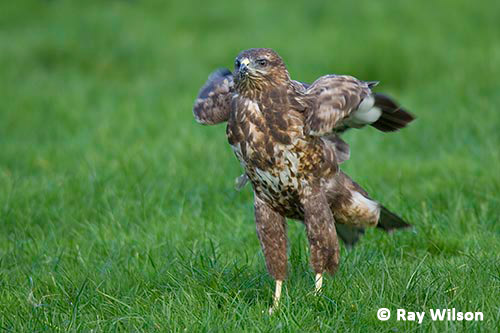
October 2006
Highlight of the month was a trip down to the Red Kite feeding station at Gigrin Farm in mid-Wales.
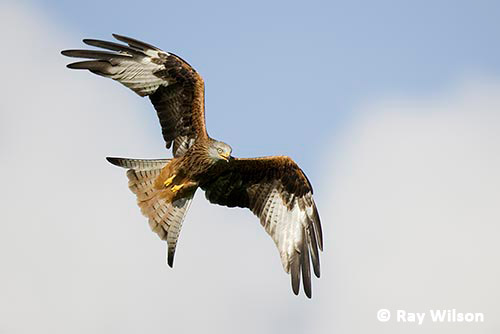
Red Kite (Milvus milvus)
The daily feeding at 3pm (2pm in the winter after the clocks go back), is one of the most spectacular avian sights you are likely to see in Britain, with up to 400 birds visiting daily.
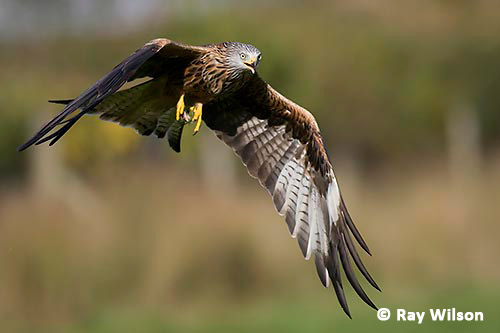
Red Kite (Milvus milvus)
The kites rarely land during the feeding and provide an awe-inspiring, acrobatic display of precision flying as they swoop down and snatch chunks of meat from the ground without even slowing down.
They don't always get it right, and do occassionally drop their prize...
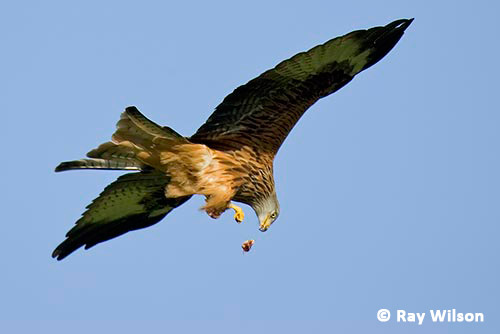
Red Kite (Milvus milvus)
The free supply of meat doesn't only attract kites to the farm. Buzzards and crows are also common.
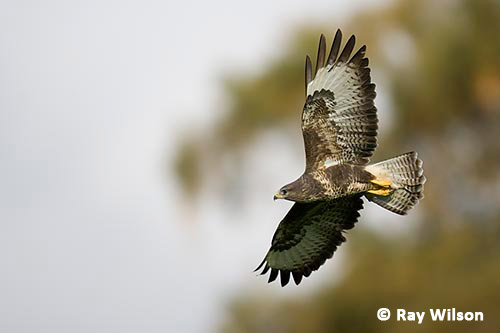
Eurasian Buzzard (Buteo buteo)
Buzzards are not as acrobatic as the kites and employ the more conventional method of landing to claim their meal.
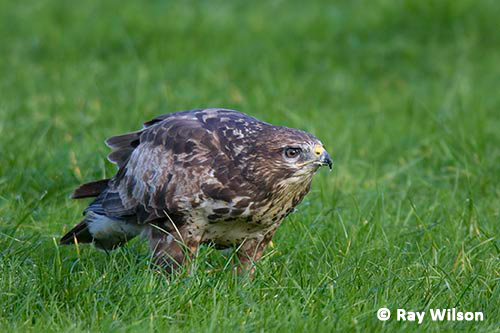
Eurasian Buzzard (Buteo buteo)
Once they have got a piece of meat, the tricky part is protecting it from both the aerial assaults of the Kites and opportunistic crows which try to nip in and steal the meat when the Buzzard is distracted by the Kites. Common methods employed are to shield their meal with their wings...
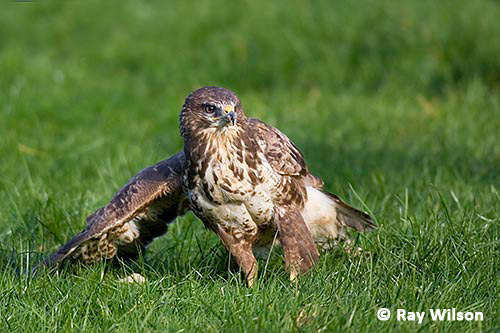
Eurasian Buzzard (Buteo buteo)
...or to stand upright to make themselves appear bigger and fiercer in an attempt to scare the potential thief away...
Eurasian Buzzard (Buteo buteo)
The next bird in the pecking order is the Raven. This large crow easily dominates the other crows and sometimes even attempts to chase Buzzards away.
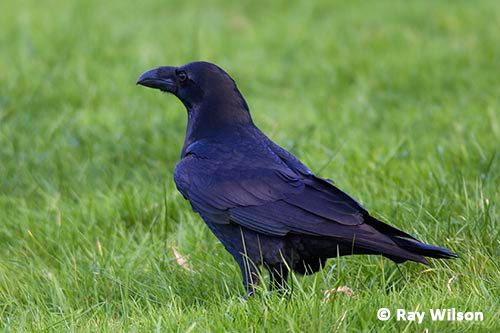
Common Raven (Corvus corax)
They are, however, more wary of people than the other crows and rarely approach close to the hides, although they do occassionally fly in briefly to snatch a piece of meat before flying off with their prize...
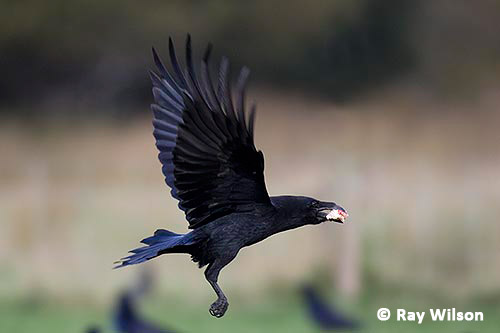
Common Raven (Corvus corax)
The Rooks and Carrion Crows are left to pick up whatever scraps are left over...
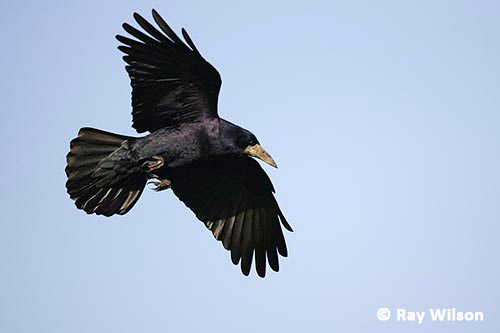
Rook (Corvus frugilegus)
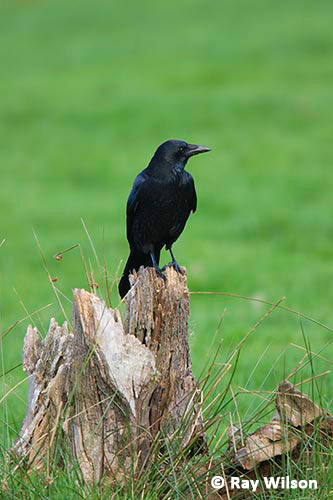
Carrion Crow (Corvus corone)
Ray Wilson owns the copyright of all images on this site.
They may not be used or copied in any form without prior written permission.
raywilsonphotography@googlemail.com
